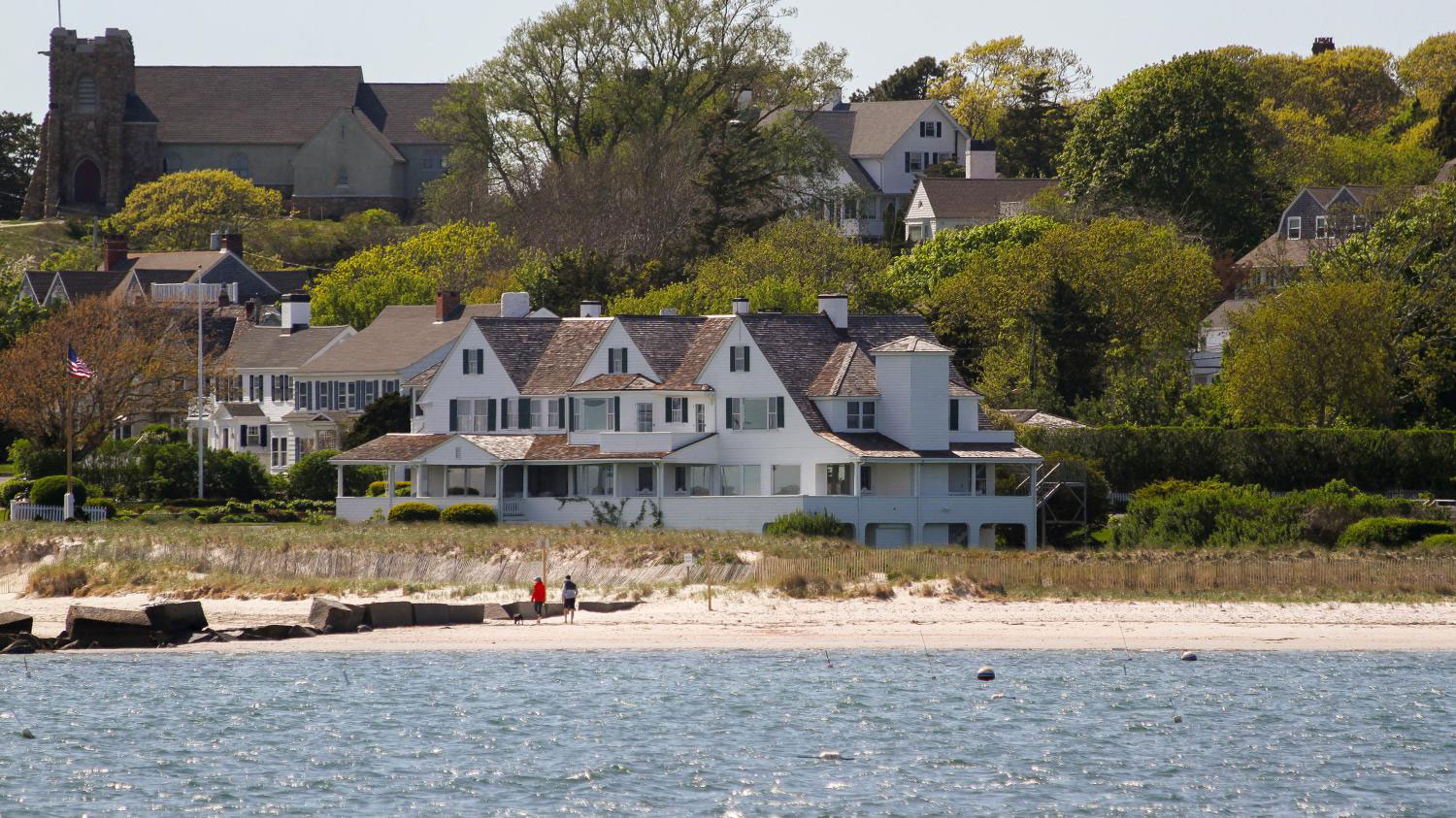
In 1962 at the height of the Cold War, a secret bunker was constructed for President Kennedy and his family on the southern shore of Nantucket island, Massachusetts.
The design, based on bunkers that had withstood the blast of atomic tests in Nevada, was meant to shield the leader of the free world from a nuclear holocaust. But it may not survive a new threat: JFK’s nuclear bunker could be lost to coastal erosion.
The bunker was one of two built for Kennedy in case America came under nuclear attack while he was on holiday at Hyannis Port, the family’s compound on Cape Cod. Another was constructed on Peanut Island, near the Kennedy’s mansion in Palm Beach.
Both are mentioned as potential National Historic Landmarks in a recent federal survey of properties related to the Cold War. Palm Beach County has said it will restore the Peanut Island bunker. A proposal to restore Nantucket’s bunker was part of a plan approved by the town in 2020. Since then a big coastal resilience study has been carried out, which showed that the bunker “is in a potential erosion zone”, Charles Polachi, Nantucket’s parks manager, said. “We don’t want to put a bunch of money into something and then have the ocean come and take it away.”
Calls to restore the bunker have been led by Bruce Percelay, a property developer and publisher.
The federal report describes it as a Quonset hut, a corrugated iron shelter “buried under 12ft of sand, lead and concrete”. Percelay said the protocol in the event of an attack was that a submarine would pick up President Kennedy and his immediate family and a limited number of top officials at Hyannis Port. It would take them to the south shore of Nantucket where “they would be washed down with iodine, or take iodine pills and then scurry into the bunker with the presumption their was radioactive fallout in the air”.
After Kennedy’s assassination in November 1963, the bunker was referred to officially as a “jet assist take off fuel bottle storage area” until the base was deactivated in 1976. Polachi, 41, said it was used for a while as an office for the island’s hunting club then fell into disrepair. He visited it last year after someonetried to rip its door off, apparently with the aid of a vehicle. From the outside it resembles the holiday home of a hobbit.
Inside, he felt “like Indiana Jones, walking in with a torch”, clearing a path through cobwebs, he said.
Percelay, 67, said he had spoken to Caroline Kennedy, JKF’s daughter, who was interested in helping him raise funds to restore the bunker. “If a benefactor came up and said I want to write a cheque to preserve this thing I think we could accommodate them,” he said. “Letting a piece of Cold War history just fade away seems tragic.”

